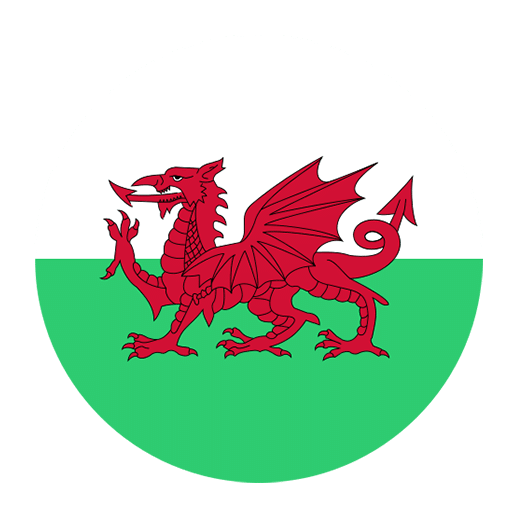Learning to describe physical appearance in Welsh can be a rewarding part of your language journey. Whether you’re planning to travel to Wales, reconnect with Welsh heritage, or simply expand your language skills, this guide will help you navigate the basics of physical descriptions in Welsh. Let’s delve into the vocabulary, phrases, and grammatical structures necessary for describing people in the Welsh language.
Basic Adjectives for Describing Appearance
To start, it’s essential to have a good grasp of basic adjectives that describe physical appearance. Here are some common adjectives you might use:
– Tall: tall – tal
– Short: short – byr
– Thin: thin – tenau
– Fat: fat – tew
– Beautiful: beautiful – hardd
– Ugly: ugly – hyll
– Young: young – ifanc
– Old: old – hen
Examples in Sentences
– He is tall. – Mae e’n dal.
– She is short. – Mae hi’n fyr.
– They are thin. – Maen nhw’n denau.
– You are beautiful. – Rwyt ti’n hardd.
– The old man. – Yr hen ddyn.
Notice how the adjective comes after the verb “to be” (bod) in Welsh, which often contrasts with English word order.
Describing Hair
Hair descriptions can get a bit more specific. Here are some key vocabulary words related to hair:
– Hair: hair – gwallt
– Long: long – hir
– Short: short – byr
– Curly: curly – cyrliog
– Straight: straight – syth
– Blonde: blonde – melyn
– Brown: brown – brown
– Black: black – du
– Red: red – coch
Examples in Sentences
– She has long hair. – Mae ganddi hi wallt hir.
– He has curly hair. – Mae ganddo fe wallt cyrliog.
– They have straight hair. – Mae ganddyn nhw wallt syth.
– You have blonde hair. – Mae gennyt ti wallt melyn.
Note the structure “Mae ganddo/ganddi/ganddyn/gennyt” which means “has” or “have” in the context of possession.
Describing Eyes
Describing someone’s eyes can also add depth to your descriptions. Here’s some useful vocabulary:
– Eyes: eyes – llygaid
– Blue: blue – glas
– Green: green – gwyrdd
– Brown: brown – brown
– Big: big – mawr
– Small: small – bach
Examples in Sentences
– He has blue eyes. – Mae ganddo fe lygaid glas.
– She has green eyes. – Mae ganddi hi lygaid gwyrdd.
– They have brown eyes. – Mae ganddyn nhw lygaid brown.
– You have big eyes. – Mae gennyt ti lygaid mawr.
Describing Facial Features
Facial features can be very specific, and having the right words can help you describe someone more accurately. Here are some terms:
– Face: face – wyneb
– Nose: nose – trwyn
– Mouth: mouth – ceg
– Ears: ears – clustiau
– Chin: chin – gên
– Beard: beard – barf
– Moustache: moustache – mwstash
Examples in Sentences
– He has a big nose. – Mae ganddo fe drwyn mawr.
– She has small ears. – Mae ganddi hi glustiau bach.
– He has a beard. – Mae ganddo fe farf.
– She has a moustache. – Mae ganddi hi fwstash.
Describing Overall Appearance
Sometimes, you need to describe someone’s overall appearance. Here are phrases that can help you do just that:
– He looks young. – Mae’n edrych yn ifanc.
– She looks old. – Mae’n edrych yn hen.
– He is very handsome. – Mae e’n bert iawn.
– She is very pretty. – Mae hi’n bert iawn.
– They look tired. – Maen nhw’n edrych yn flinedig.
Complex Sentences and Comparisons
As you get more comfortable, you might want to use more complex sentences or make comparisons:
– He is taller than her. – Mae e’n dalach na hi.
– She is as beautiful as her sister. – Mae hi mor hardd â’i chwaer.
– He is not as old as he looks. – Nid yw e mor hen ag y mae’n edrych.
Practicing and Using Descriptions
The best way to get comfortable with these descriptions is through practice. Here are a few tips to help you practice:
1. **Create Flashcards**: Write the Welsh word on one side and the English translation on the other. This will help you memorize the vocabulary.
2. **Practice with a Partner**: If you know someone else learning Welsh, practice describing people you both know. This will help reinforce your learning.
3. **Use Descriptions in Daily Life**: Try to describe people you see in your daily life using Welsh. This could be people on TV, in magazines, or even strangers you see on the street (in your mind, of course).
4. **Write Descriptions**: Write short paragraphs describing people you know. This could be friends, family members, or even fictional characters.
5. **Use Language Apps**: There are many language learning apps available that can help you practice and reinforce your vocabulary.
Additional Resources
To further enhance your learning experience, here are some resources you might find useful:
– **Online Dictionaries**: Websites like Geiriadur Prifysgol Cymru (University of Wales Dictionary) offer comprehensive Welsh-English dictionaries.
– **Language Exchange Platforms**: Websites like Tandem or HelloTalk can connect you with native Welsh speakers for language exchange.
– **Books and Media**: Reading Welsh books, watching Welsh TV shows, and listening to Welsh music can provide context and help you see how these descriptions are used in real life.
Conclusion
Describing physical appearance in Welsh is a valuable skill that can help you communicate more effectively and enrich your interactions with Welsh speakers. By mastering the basic vocabulary, practicing regularly, and using additional resources, you can become proficient in describing people in Welsh. Remember, language learning is a journey, and every new word or phrase you learn brings you one step closer to fluency. So, keep practicing and enjoy the process of discovering the beauty of the Welsh language.

